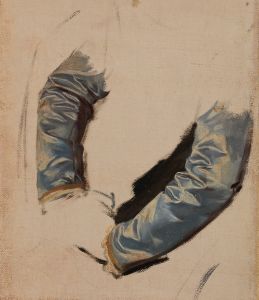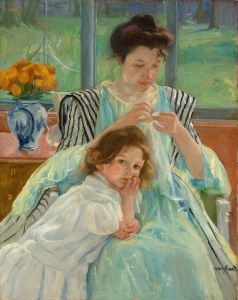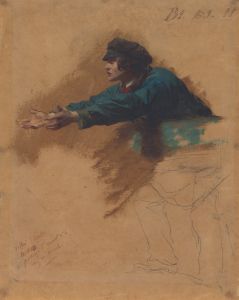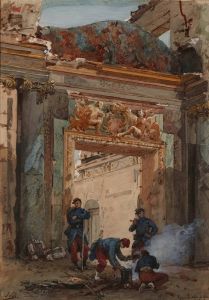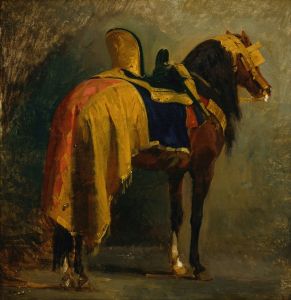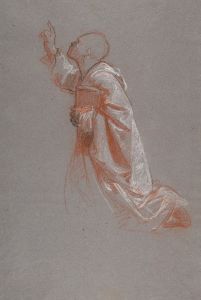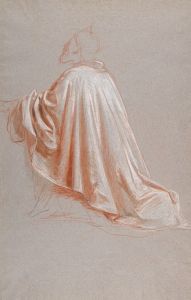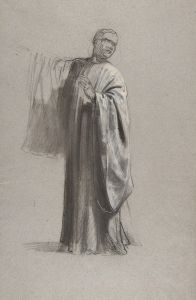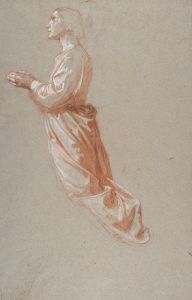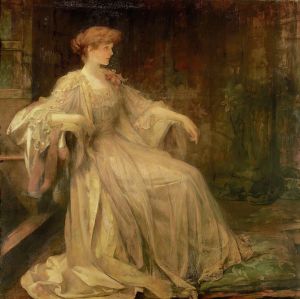
Drapery Study for a Cleric
A hand-painted replica of Isidore Pils’s masterpiece Drapery Study for a Cleric, meticulously crafted by professional artists to capture the true essence of the original. Each piece is created with museum-quality canvas and rare mineral pigments, carefully painted by experienced artists with delicate brushstrokes and rich, layered colors to perfectly recreate the texture of the original artwork. Unlike machine-printed reproductions, this hand-painted version brings the painting to life, infused with the artist’s emotions and skill in every stroke. Whether for personal collection or home decoration, it instantly elevates the artistic atmosphere of any space.
Isidore Pils, a notable French painter of the 19th century, is recognized for his contributions to historical and religious art. One of his works, "Drapery Study for a Cleric," exemplifies his skill in capturing the intricate details of fabric and clothing, which was a common practice among artists seeking to refine their technique in rendering textures and folds.
Pils was born on July 19, 1813, in Paris, France. He studied at the École des Beaux-Arts under the tutelage of François-Édouard Picot, a prominent academic painter. Pils' early works were heavily influenced by the academic style, which emphasized classical themes and precise draftsmanship. Throughout his career, Pils developed a reputation for his historical and religious compositions, often characterized by their dramatic intensity and meticulous attention to detail.
"Drapery Study for a Cleric" is a testament to Pils' dedication to mastering the depiction of fabric, a crucial skill for artists of his time. Drapery studies were commonly used by artists to practice and perfect the portrayal of clothing and textiles, which played a significant role in the composition and realism of their larger works. These studies allowed artists to explore the play of light and shadow on different materials, enhancing their ability to convey texture and depth.
While specific details about "Drapery Study for a Cleric" are limited, such studies typically involve a focus on the folds and movement of fabric, often using a live model or a mannequin draped in cloth. The study would serve as a reference for larger, more complex compositions, particularly those involving religious figures or historical scenes where the depiction of garments was essential to the narrative and aesthetic of the piece.
Isidore Pils' broader body of work includes notable paintings such as "Rouget de Lisle Singing La Marseillaise" and "The Death of a Sister of Charity," which reflect his ability to convey emotion and drama through his compositions. His attention to detail and skillful rendering of figures and drapery contributed to his success and recognition in the art world.
Pils' contributions to art were acknowledged during his lifetime, and he received several prestigious commissions and awards. In 1855, he was awarded the Legion of Honor, one of France's highest distinctions, in recognition of his artistic achievements. He also served as a professor at the École des Beaux-Arts, where he influenced a new generation of artists.
"Drapery Study for a Cleric" fits within the context of Pils' artistic endeavors, showcasing his commitment to the academic tradition and his pursuit of technical excellence. Although the study itself may not be as widely recognized as some of his larger works, it represents an essential aspect of his artistic process and dedication to his craft.
Isidore Pils passed away on September 3, 1875, in Douarnenez, France. His legacy endures through his contributions to 19th-century French art, particularly in the realms of historical and religious painting. His works continue to be studied and appreciated for their technical skill and emotional depth, with "Drapery Study for a Cleric" serving as a fine example of his meticulous approach to art.





